BARD AI
JF-Expert Member
- Jul 24, 2018
- 3,376
- 8,118
The Alassane Ouattara stadium rises like a piece of sculpture from the dusty brown earth north of Ivory Coast’s largest city, its undulating roof and white columns towering over the empty landscape like a spaceship that has dropped onto a uninhabited planet.
On Sunday, the three-and-a-half-year-old stadium will host its signature moment, when the national soccer teams of Ivory Coast and Nigeria compete in the final of Africa’s biggest sporting event, in front of tens of thousands of fans chanting and cheering in a stadium financed and built by China.
While that is nothing new for the tournament, the Africa Cup of Nations, the arena is just the latest example of the contradictions that emerge from Chinese projects built on Chinese terms, and on African soil.
Stadiums have been a cornerstone of China’s diplomatic reach into Africa since the 1970s, but their number has increased since the early 2000s, part of a larger Chinese strategy to build infrastructure — from highways to railroads, ports to presidential palaces and even the headquarters of the African Union — in exchange for diplomatic clout or access to natural resources.
Through that trillion-dollar program, known as the Belt and Road Initiative, China has become a central partner to the developing countries that benefit from expensive projects they might not otherwise be able to afford. But Chinese construction has sometimes been accompanied by charges of local corruption, and critics have questioned the value of the big-budget projects, noting they deliver dubious long-term economic benefits but very real debts that governments can struggle to repay.
“China doesn’t ask why you need a stadium,” said Itamar Dubinsky, a researcher at the African Studies Program at the Ben-Gurion University of the Negev, Israel. “It just finances and builds it.”
Image
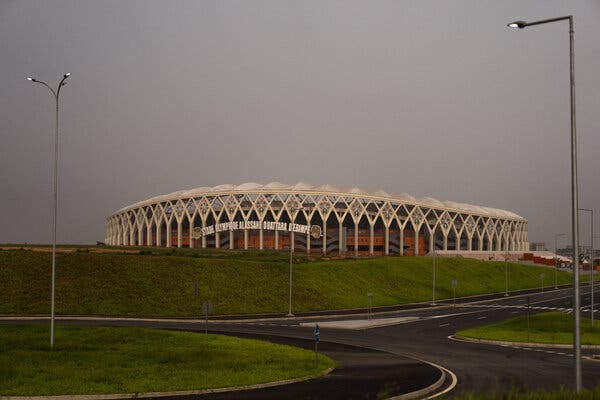
The walk to the Ouattara stadium can take up to an hour because the road to it is not open yet. Critics say Chinese-built stadiums are rarely delivered with the infrastructure to support them.

Image
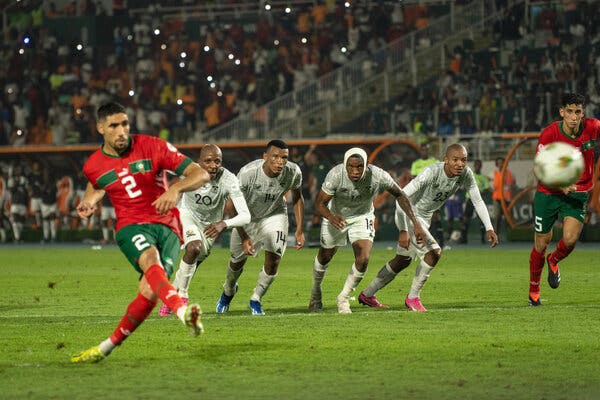
South African players during their match against Morocco.

Image
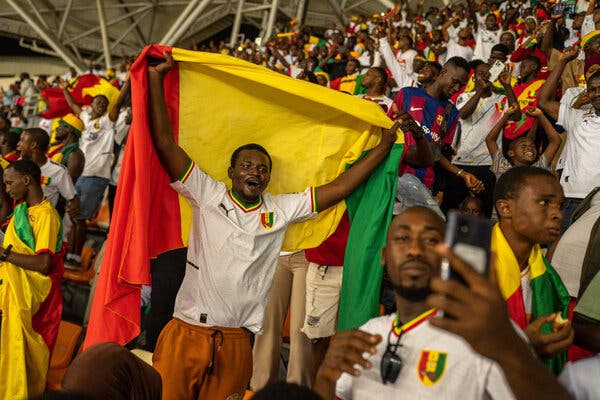
Guinea fans in Abidjan. The Cup of Nations is Africa’s biggest sporting event.

Over the past two decades, Chinese companies have built or renovated dozens of stadiums across Africa, including, in the past 15 years, nearly half of those that have hosted matches in the Africa Cup of Nations. That total includes three of the six used for this year’s tournament, whose showpiece is the 60,000-seat Ouattara stadium, designed and built by two Chinese state-owned companies.
Its exterior of white columns and curving arches — inset with panels tinted green and orange, the national colors of Ivory Coast — is a stylistic improvement from earlier projects on the continent, which critics have derided as drab concrete monoliths.
But three years after the stadium hosted its first game, the new road leading to it still hasn’t opened, forcing fans to walk for up to an hour to reach or leave the arena, and the sports city around it has yet to materialize. That, critics say, is another regular feature of the projects. Chinese-built stadiums are rarely delivered with the infrastructure to support them, or the know-how to maintain them.
Map locates the southern city of Abidjan in the Ivory Coast, as well as the town of San Pedro to the west.
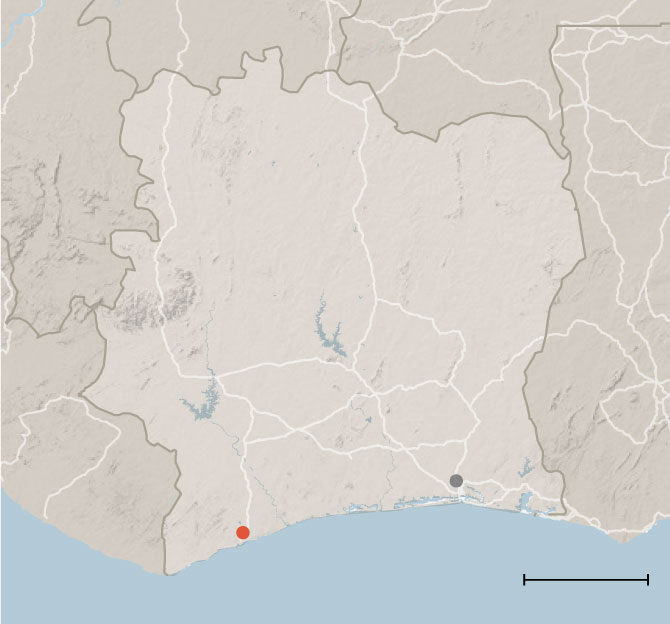
Yet for countless fans who watched games over the past month, what mattered lay elsewhere. Ivory Coast, bouncing back from civil war and boasting one of West Africa’s largest economies and a dynamic middle class, has showcased its ability to host a major tournament in state-of-the-art facilities.
“One can only be impressed,” one fan, Halima Duret, said as she scanned the stands on a recent evening. An interior designer living in Abidjan, Ms. Duret was attending a soccer game for the first time, and it was a special one. Her home country’s team, Guinea, had reached the quarterfinals. “What a beauty,” she added.
More on China
- Sounding the Alarm: After consumer prices fell in January in China by the most since the global financial crisis in 2009, worries are growing that the country could experience a broader decline in the overall level of prices, which could be very troublesome for the economy.
- Welcome to ‘Dalifornia’: Young Chinese are flocking to the picturesque mountain town of Dali to escape the cutthroat competition and suffocating political environment of China’s megacities.
- Beijing’s Censorship Dragnet: As China struggles with a slumping stock market and a collapsing real estate sector, any commentary and even financial analysis that the government deems negative are being blocked.
- Job Seekers: A new generation of aspiring professionals in China is facing the toughest job market in years. Here’s how some of these young people got their jobs.
As Chinese and Ivorian workers were building the stadium in Ebimpé, on the outskirts of Abidjan, President Alassane Ouattara visited his Chinese counterpart, Xi Jinping, in Beijing in 2018 to strengthen the countries’ relations. Since then, Ivory Coast has increased its exports of rubber and crude oil to China, which has become Ivory Coast’s largest trading partner. China is also financing the expansion of Abidjan’s port, one of its largest Belt and Road Initiative projects in West Africa.
https://www.nytimes.com/interactive/2024/02/10/world/americas/rio-de-janeiro-carnival.html
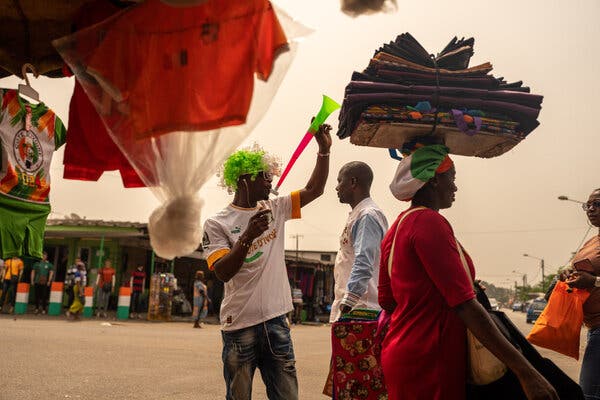
A vendor selling Ivory Coast paraphernalia at a market in Abidjan. The host nation will play Nigeria in Sunday’s final.

Image
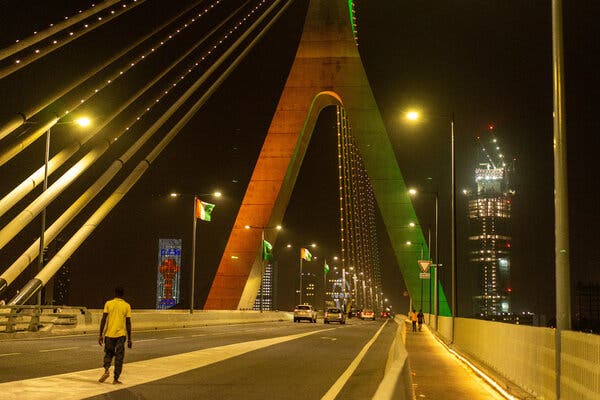
China’s Belt and Road Initiative has built bridges, railroads and ports in Africa.

Image
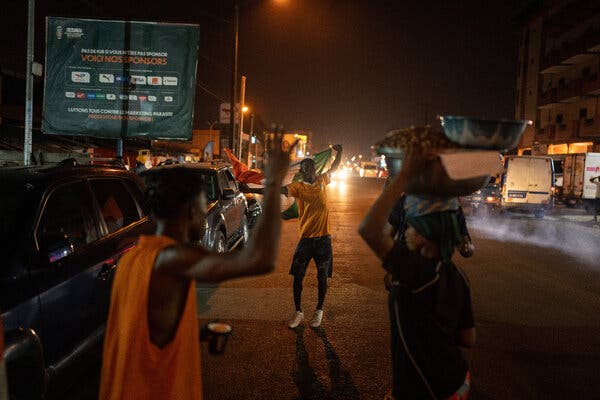
Ivorians celebrating their victory over Mali in the quarterfinals of the Cup of Nations.

When China’s foreign minister, Wang Yi, visited Ivory Coast during the Africa Cup of Nations last month, he thanked Mr. Ouattara for his country’s support to China’s “vital interests,” including on Taiwan. Mr. Ouattara vowed to deepen the bilateral relationship and said the countries shared a similar vision of the world order.
While stadiums might not be the biggest infrastructure projects, or the most worthwhile, they are popular, at least at first, experts on China-Africa relations said.
“A stadium is one of the most eye-catching signs of China’s ability to contribute to the development of African countries,” said Filomène Ebi, an Ivorian Sinologist and associate researcher at the National Taiwan University. “Most people in Ivory Coast know that China built the Ouattara stadium,” she said.
As mass consumption of sports booms in Africa, other countries have joined the game. A Turkish construction company built Senegal’s new national soccer stadium, which will host the Youth Olympic Games in 2026. And “Visit Saudi Arabia” is the main sponsor of a new pan-African soccer league.

Western companies and governments are also playing: The French oil company Total Energies is the Africa Cup of Nations’ main sponsor, and the N.B.A. is a main backer of the Basketball Africa League.
But no country has poured more effort into embedding itself into Africa’s sports scene than China, and countries hosting the Cup of Nations have been favored recipients. All of the stadiums built for recent editions of the tournament in Angola and Gabon were built by Chinese companies. And in Kenya’s capital, Nairobi, a Chinese company is renovating the stadium where President William Ruto was inaugurated, and which will host soccer games for the 2027 edition of the cup.
Most stadiums are donations from China, or financed through soft loans from Chinese banks. “A soccer stadium is a small price to pay for potentially much larger benefits,” said Simon Chadwick, a professor of sport and geopolitical economy at the Skema Business School in Paris.
But many African governments have let stadiums that were initially a point of pride fall into disrepair. A Chinese-built stadium in the capital of Gabon, Libreville, has been mostly abandoned since it hosted the final of the Cup of Nations in 2017. The Chinese-built national stadium of the Central African Republic, one of the world’s poorest countries, cannot even host the games of its own national team.
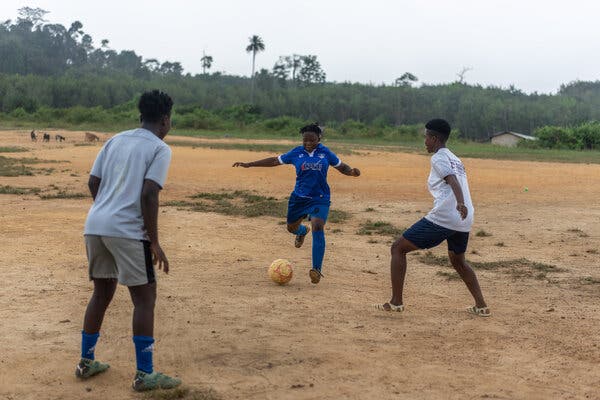
A dusty field on the outskirts of San Pedro, Ivory Coast. Large stadiums are popular, but critics say they are not what the country needs most.
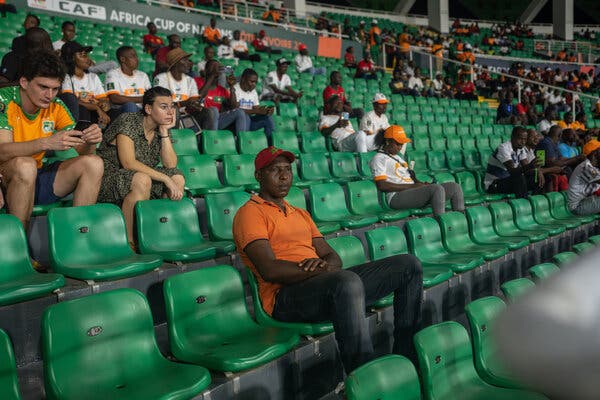
Local government officials have handed out free tickets to try to fill the stands at the Chinese-built Laurent Pokou Stadium in San Pedro, Ivory Coast.

Image
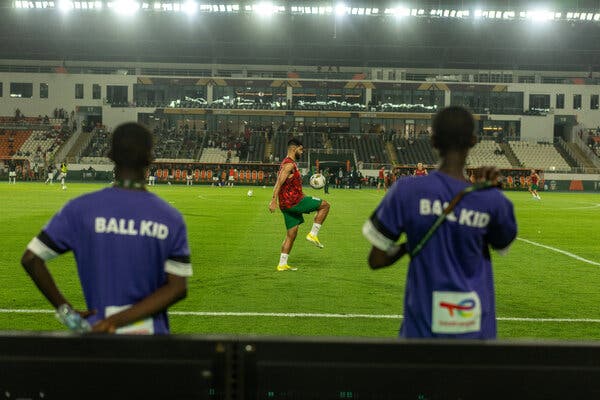
The local club slated to take over the Pokou stadium after the cup said it would struggle to fill it.

Even Ivory Coast’s shiny stadium has imperfections: Its grass field doesn’t extend far enough beyond the playing surface, so organizers have had to patch its perimeter with artificial turf to keep players in cleats from slipping on the adjacent running track.
The future of the smaller stadiums built across Ivory Coast also appears uncertain.
Government officials said local teams would use the infrastructure once the tournament was over, but in the resort town of San Pedro, home to a new 20,000-seat stadium built by a Chinese company, the city’s main soccer club said the facility was too big for its needs.
“At best we might manage to fill it at 30 percent,” said Abdelkarim Bouaziz, an executive at F.C. San Pedro, which plays in Ivory Coast’s top league. “But we won’t be able to pay for its maintenance.”
Ivory Coast invested more than $1 billion in the organization of the tournament, but it has also struggled to fill its stadiums’ shiny seats, raising questions about whether it made sense to construct such large venues for a monthlong event.
During the opening game, which featured the host nation, the Ouattara stadium was about two-thirds full. In San Pedro, the town hall was recently awash with unsold tickets, which the mayor, Nakaridja Cissé, said she was distributing free in an effort to invite residents into the new arena.
Ivorian officials say they have a post-tournament strategy for the new or renovated infrastructure. Ousmane Gbané, the head of the National Office for Sports, said local clubs like F.C. San Pedro would finally leave Abidjan, where they have trained and played for years, and use the new facilities. International hotel chains, Mr. Gbané said, had expressed interest in managing the residences built for the tournament’s teams.
“We’ve learned from the mistakes of others,” Mr. Gbané said. In only a few weeks, he said confidently, “the infrastructure we built for Afcon will have a new life.”
Image
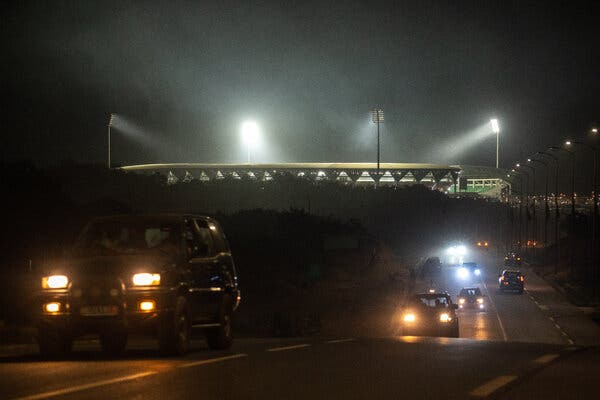
The Chinese-built Laurent Pokou Stadium in San Pedro.
Abdi Latif Dahir, Tariq Panja and Loucoumane Coulibaly contributed reporting.
Elian Peltier is The Times’ West Africa correspondent, based in Dakar, Senegal. More about Elian Peltier
Joao Silva is a Times photographer based in South Africa. More about Joao Silva
A version of this article appears in print on Feb. 11, 2024, Section SP, Page 14 of the New York edition with the headline: Long Walk To Stadium China Built In Africa . Order Reprints | Today’s Paper | Subscribe